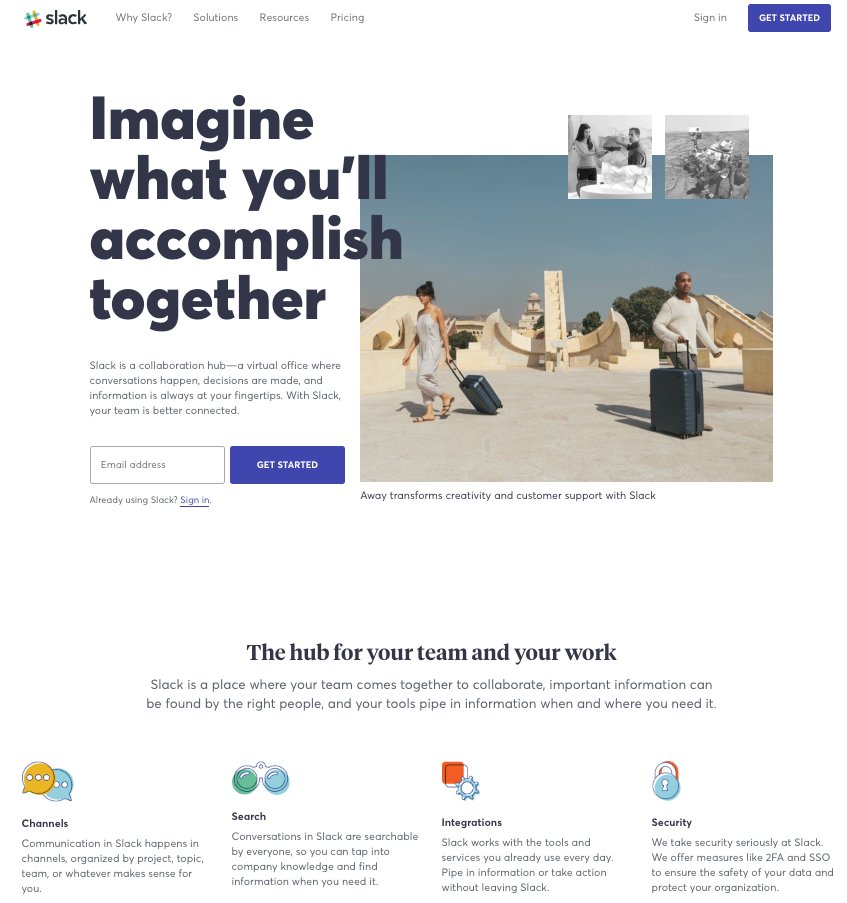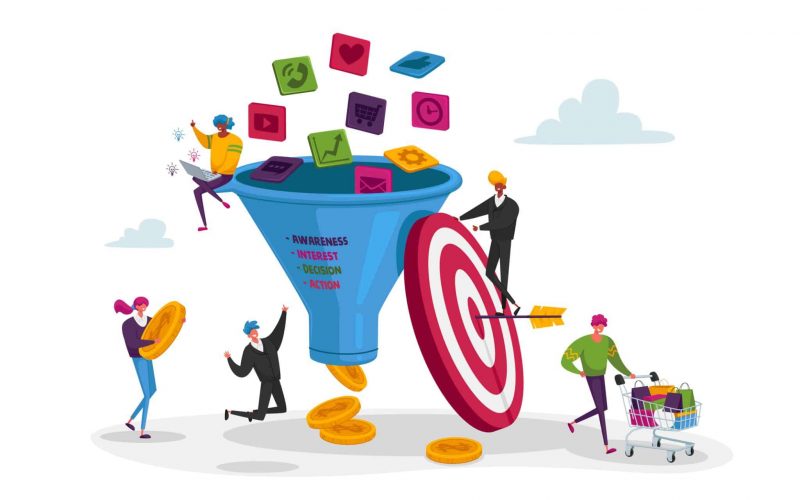Sitting in a small conference room with a team of marketers, I could sense the anxiety in the air. We had launched a promising campaign that we were so sure would succeed. We had already spent so much time on it, and our content was engaging. However, our conversion rates were really poor as the weeks went by. It was then that I realized we needed to change our approach. I’d say that was what led me to learn about conversion marketing. Since then, I’ve mastered strategies that have not only turned around that campaign but also benefitted others. In this article, I’ll share these insights with you so you can optimize your own marketing efforts and see tangible results.
Key Takeaways:
- Conversion marketing is a digital marketing strategy that focuses on increasing the percentage of site visitors who perform a specific action, called a conversion. It’s a systematic approach to turning potential leads into paying customers.
- The key metrics to track in conversion marketing include conversion rates and traffic sources.
- A good conversion marketing strategy involves identifying your target audience, creating compelling content, optimizing landing pages, leveraging social proof, segmentation, etc…
What is Conversion Marketing?

Conversion marketing is a digital marketing strategy that focuses on increasing the percentage of site visitors who perform a specific action, called a conversion. It’s a systematic approach to turning potential leads into paying customers.
Unlike general marketing, which often focuses on broad brand awareness, conversion marketing zeroes in on the specific actions you want your audience to take, such as making a purchase, signing up for a newsletter, or filling out a contact form. By concentrating on these actions, you can fine-tune your marketing strategies to achieve measurable, impactful results.
Key Metrics in Conversion Marketing
To gauge the effectiveness of your conversion marketing efforts, you need to track certain key metrics:
#1. Conversion Rate
The percentage of visitors who complete a desired action. This can be in two forms:
- Interactions Per Visit: Whether or not they convert, tracking how a visitor interacts with your site can glean some fruitful insights that you can leverage to optimize your experiences. The number of pages visited, the amount of time spent on a particular page, whether or not comments were left on blogs, and similar interactions can help you understand visitors’ behavior on your site, get a glimpse of their hesitations, and figure out what is working well. All of these insights can be good fodder for crafting promising hypotheses.
- Bounce Rate: The percentage of visitors who leave your site after viewing only one page. A high rate could often indicate poor usability, slow load times, unengaging content, technical errors, and much more. Therefore, when optimizing for conversions, bounce rate is one of the primary metrics you should be tracking and looking to improve as you can only get your visitors to convert once they are sufficiently engaged and spend enough time on your site.
#2. Traffic Sources
It’s important to be aware of how each of your traffic acquisition channels is performing so you always have a direction in which you need to reorganize your efforts to have a steady flow of visitors. For example, if visitors coming in via social and email only constitute 3% and 2% of your total traffic respectively, you will probably have to revisit your social media strategy, improve the content of your weekly newsletters and other email campaigns, and so on.
#3. New Visitor Conversion Rate
It’s safe to assume that first-time visitors’ behavior on your site is drastically different from that of repeat visitors. Therefore, even conversion rates for the two need to be analyzed separately. A new visitor conversion rate will tell you about the first impression your site leaves, whether or not it gets new prospects interested, how effectively your content engages with them, how it performs in terms of usability and functionality, and so on.
#4. Repeat Visitor Conversion Rate
Given that 40% of an eCommerce store’s revenue comes from repeat purchases, one cannot undermine the criticality of effectively marketing to return visitors. Even when it comes to subscription-based businesses, return visitors are more likely to convert than first-time visitors. Therefore, analyzing this metric will help you assess how effectively your site engages with visitors familiar with your brand and engaged enough to return.
By closely monitoring these metrics, you can identify areas for improvement and adjust your strategies accordingly.
Strategies for Effective Conversion Marketing
#1. Identifying Your Target Audience
The first step in any successful conversion marketing strategy is understanding your audience. Early in my career, I launched several campaigns without fully grasping who I was targeting. The results were lukewarm at best. It wasn’t until I invested time in audience research—using tools like Google Analytics and social media insights—that I started seeing significant improvements. Knowing your audience’s demographics, interests, and behaviors allows you to tailor your messaging and offers to meet their specific needs.
#2. Creating Compelling Content
Content is the backbone of conversion marketing. Invest into creating high-quality content—such as informative blog posts, engaging videos, and persuasive case studies—and you’ll boost your conversion rates dramatically. The key is to provide value, address pain points, and guide your audience toward making a decision.
Read Also: Interactive Facebook Posts: Level Up Your Marketing Strategy
#3. Optimizing Landing Pages
Your landing page is often the first point of contact between your business and potential customers. A well-designed landing page can make all the difference. Use clear headlines, brief copies, and compelling CTAs (Call to Actions). I remember an instance where simply changing the color of a CTA button from green to red increased conversions by 20%. It’s all about making the user experience as seamless and persuasive as possible.
Here’s an example of Slack’s landing page that comprehensively states how teams can use the product without driving attention away from the CTA:

#4. Utilizing A/B Testing
A/B testing has been a game-changer in my conversion marketing efforts. By running A/B tests on everything from email subject lines to landing page designs, I’ve been able to make data-driven decisions that consistently improve performance. For instance, one of my A/B tests showed that a simpler design with less text on our homepage resulted in a 15% higher conversion rate. The insights gained from these tests are invaluable.
#5. Leveraging Social Proof
Never underestimate the power of social proof. Testimonials, reviews, and case studies can significantly influence potential customers. I once collaborated with a client who had numerous satisfied customers but wasn’t showcasing their stories. By highlighting these success stories on their website and marketing materials, we saw a noticeable increase in conversions.
People trust peer recommendations more than promotional messages from brands.
#6. Personalization and Segmentation
One-size-fits-all approaches are no more effective these days. Personalization and segmentation have allowed me to deliver more relevant content to specific audience segments. Using email marketing platforms like Mailchimp, I’ve been able to send targeted campaigns based on user behaviour and preferences. This personalized approach has consistently yielded higher engagement and conversion rates.
Tools and Technologies for Conversion Marketing
#1. Marketing Automation Tools
Marketing automation tools like HubSpot, Marketo, and Mailchimp have revolutionized the way I manage campaigns. These tools help automate repetitive tasks, segment audiences, and track performance, enabling me to focus on strategy and creativity. For example, using HubSpot’s workflows, I automated follow-up emails based on user actions, resulting in a 25% increase in lead nurturing effectiveness.
#2. Analytics and Tracking Tools
Tracking and analyzing performance is crucial. Tools like Google Analytics and Hotjar provide insights into user behaviour and website performance. By regularly reviewing these analytics, I’ve been able to identify bottlenecks and optimize user journeys. Once, I discovered a high exit rate on a particular page and, after investigating, made changes that led to a 10% improvement in conversions.
#3. Customer Relationship Management (CRM) Systems
CRMs like Salesforce and Zoho CRM play a vital role in managing customer interactions and data. Implementing a CRM system helped me keep track of leads, automate follow-ups, and gain insights into customer journeys. This streamlined process not only improved efficiency but also boosted our conversion rates by ensuring no lead fell through the cracks.
Future Trends in Conversion Marketing
#1. AI and Machine Learning
AI and machine learning are transforming conversion marketing. These technologies enable more precise personalization and predictive analytics. I’ve started integrating AI-driven tools to analyze user behaviour and predict future actions, leading to more effective marketing strategies.
Pre-built chatbots
Chatbots are a great way to reduce bounce rates and engage visitors with your website. There are a few different types of chatbots, such as pre-built chatbots, AI chatbots, and Live chat. The pre-built chatbot would be the most effective for conversion marketing as it’s made with a conversational flow that web visitors can freely engage with – regardless of the availability of your agents. Its ability to engage with web visitors at all times makes it the perfect tool to effectively engage web visitors.
Pre-built chatbots are better than AI chatbots because users know exactly what they can ask. Taking your most frequently asked questions and putting them inside your chatbots will save your customer service agents a lot of time from answering repetitive questions. This is also why pre-built chatbots are better than live chats. However, you can also use chatbot and live chat combinations if you prefer your agents to connect directly with users.
You can also use a pre-built chatbot for other reasons. Apart from generating leads, it also helps web visitors easily navigate the different sections of your website by helping them find exactly what they’re looking for.
#2. Voice Search Optimization
With the increase of voice-activated devices, optimizing for voice search is becoming important. This involves creating content that answers specific questions users might ask their devices. Incorporating long-tail keywords and natural language processing into your SEO strategy can help capture this growing segment of users.
#3. Interactive Content
Interactive content, such as quizzes, polls, and interactive infographics, engages users more effectively than static content. People love engaging with content that offers a personalized experience.
Interactive Video Content
Another example of interactive content is video content. Interactive video content relays much more information than static graphics or text content. For this reason, users will likely hang around for a minute to watch an informative, eye-catching video, and more engagement means more website conversions!
You can show off the benefits or stunning looks of your products more vividly through video than a static image. Even share product how-to videos or helpful tips.
Video SEO
This is another important aspect of using video content to engage your audience. Video SEO is simply optimizing your video to be indexed and ranked on search engine results pages for relevant keyword searches. Do this by adding a video transcript and an engaging thumbnail to your video content – along with an SEO-optimized title and video description.
In addition to including videos on your website, another tip is to pay attention to how social media platforms change over time. For instance, Instagram is showing more Reels, a kind of short-form video, than it does photographs these days. This is an effective conversion marketing technique to increase website visitors.
What Is The Conversion Model In Marketing?
The conversion model in marketing is a framework that maps out the customer journey from initial contact to the final action (conversion), such as a purchase or sign-up. It involves attracting, engaging, and nurturing leads through targeted strategies to maximize the conversion rate.
What Is A Conversion Tactic?
A conversion tactic is a specific action or strategy aimed at encouraging potential customers to complete a desired action, such as making a purchase or signing up for a newsletter. Examples include optimizing landing pages, using compelling CTAs, personalized marketing, and leveraging social proof.
What Is Digital Conversion Marketing?
Digital conversion marketing is the process of using online strategies and tools to turn website visitors or leads into paying customers. It involves optimizing various digital touchpoints, such as content, landing pages, and CTAs, and utilizing data analytics to enhance user engagement and drive conversions.
In Conclusion,
Conversion marketing is a powerful approach that can significantly boost your business growth when executed correctly. By understanding your audience, creating compelling content, optimizing landing pages, leveraging social proof, and utilizing advanced tools and technologies, you can enhance your marketing efforts and achieve higher conversion rates. Remember, the key is to continuously test, analyze, and optimize your strategies. Start implementing these techniques today and watch your conversions soar.
Related Articles
- Customer Marketing: 8 Killer Customer Marketing Strategies for Building Your Brand
- Understanding The Benefit of Digital Marketing Strategies
- Proven SaaS Content Marketing Tactics for Boosting Engagement and Conversions
- What Is Authoritative Content? How It Is Used and Steps To Creating One






